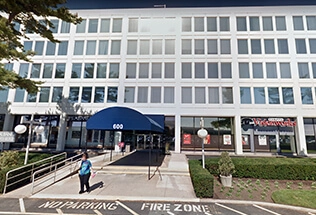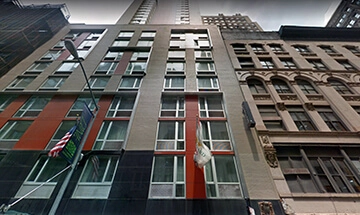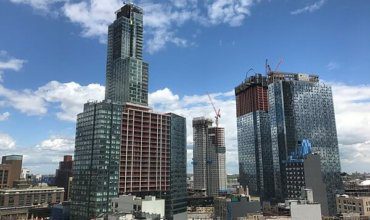Construction workers are susceptible to all kinds of dangers while on the job. Consequently, they are at a higher risk of suffering work-related harm(s) than workers in most other industries.
While there are many types of construction accidents, excavation accidents are one of the leading causes of injury among construction workers. Taking the right precautions can help prevent accidents and protect workers from hazards while reducing the risk of injury during digging and excavation.
To this end, we can help you learn about workplace safety guidelines and how excavation accidents can be avoided.
Moreover, you may be eligible for compensation if you have been injured at work or while performing work-related duties. To file a workers’ compensation claim, speak with one of our in-house lawyers by calling Schwartzapfel Lawyers at 1-516-342-2200 or visiting us online to schedule your free consultation today!
Construction Accidents: Types and Causes
Construction accidents can lead to serious injuries, and in some cases, even death. Fatality rates in construction work are five (5) times higher than fatality rates across all other industries.
Because of the various hazards construction workers are exposed to, many different types of accidents can occur on a construction site.
Common construction accidents include but are not limited to:
- Falls from any height.
- Slips, trips, and/or falls on slippery or wet surfaces, broken or uneven walkways, etc.
- Electrocutions due to exposed electrical wires and/or faulty equipment.
- Getting struck by falling or unsecured objects or other workers.
Construction accidents can lead to a wide range of injuries. Slips, trips, and falls can result in significant bruising, broken bones, paralysis, and even death. Minor electrocutions can cause burns on the skin; severe electrocutions can lead to nerve and/or heart damage; getting struck by a heavy object can cause concussions and disabling brain injuries.
Note: If you or a loved one have suffered losses due to a construction accident or other type of workplace accident, you are entitled to rights under the law.
Workers’ compensation insurance functions to provide injured workers with benefits after an accident. You may be eligible to receive coverage for medical expenses, lost income, and disability or impairment when you file a workers’ compensation claim.
That said, the best way to preserve your rights as a worker is by understanding how workplace injuries occur and how risks can be reduced.
How Do Construction Accidents Happen?
Understanding how and why construction accidents happen can help both workers and employers prevent future incidents from occurring.
There are various reasons an accident can occur. The following are some common causes:
- Lack of fall protection, such as handrails on platforms, stairwells, and other elevated surfaces.
- Shortage of necessary safety equipment, such as hard helmets and face shields.
- Failure to properly secure hazardous objects and materials, such as steel beams.
- Inadequate workplace safety training.
- Defective or broken equipment as a result of missed maintenance checks.
Accidents can occur because employers or supervisors do not do their part in securing construction and work sites. They can also be caused by worker carelessness while on the job. In some cases, accidents happen, and no one is at fault.
Note: Regardless of the cause of an accident, taking the right course of action can help reduce detriments and losses.
For more information about construction accidents and how they can happen, you can speak with a skilled team member at Schwartzapfel Lawyers by calling 1-516-342-2200 now!
Trenching and Excavation Accidents
Every year, more than (25) workers are killed in excavation accidents in the United States. Projects involving digging and excavation can pose dangers to construction workers and lead to different accidents.
Excavation involves digging underground and clearing away soil or other materials from an area or piece of land. It can also involve creating trenches or underground tunnels.
Construction work that necessitates excavation includes building foundations, roads, and underground structures.
The types of accidents that can occur during a trenching or excavation project include but are not limited to:
- Cave-ins and collapses of underground trenches and tunnels that can trap workers underneath dirt and debris.
- Slips and falls into deep dig outs which can lead to workers being injured on impact or stuck until they can be pulled out.
- Getting hit or struck by bulldozers, power shovels, or other types of machinery used for excavation.
- Equipment failure or defects that can hinder control over a machine.
- Electrocution from using faulty equipment or exposed power lines in tunnels or trenches.
Injuries from excavation accidents are almost always harmful and can be deadly. Common injuries resulting from excavation accidents include: strains, sprains, and tears, broken bones, minor-to-severe lacerations, deep contusions, head trauma, respiratory problems stemming from inhaling debris or fumes, and suffocation due to cave-ins and collapses.
For the answers to your questions or concerns about excavation accidents, contact Schwartzapfel Lawyers and speak with one of our experienced construction attorney attorneys by calling 1-516-342-2200 today!
Digging and Excavation Safety Guide
While construction accidents can be inevitable, understanding and applying safety guidelines can help prevent them from occurring and reduce the damages they may cause.
Digging and excavation projects can be performed more securely through adherence to certain safety regulations.
According to the Occupational Safety and Health Administration (OSHA), the following actions can minimize the dangers of digging and excavation.
General Safety Best Practices
- Assess the excavation area before starting a project. Make sure to determine whether the soil type in the area can support an excavation project. Note: Soil that is too soft or muddy can increase the risk of collapses.
- Regularly inspect trenches and tunnels to ensure structural stability, low oxygen levels, and toxic fumes or gasses before allowing workers inside.
- Ensure that trenches and tunnels are always held up by supportive structures to prevent walls from caving in.
- Install ramps or steps in excavations or tunnels to allow workers to enter and exit these areas more easily.
- Avoid working during or right after extreme weather conditions, especially heavy rainstorms that can flood or weaken excavations.
- Avoid operating heavy machinery near the edge of an excavation or tunnel where it might be weaker in structure and collapse under heavy weights.
- All workers must be provided with and use safety equipment. This includes but is not limited to: hard hats to protect against impacting objects, masks to prevent the inhalation of dirt and harmful chemicals, and goggles to shield the eyes from debris and sharp objects.
- Workers should wear reflective clothing or bright construction vests to be easily spotted from afar on excavation sites or while working in dark tunnels.
- Fall protections, such as barriers or guardrail systems, are required for six (6) feet deep excavations. They must be installed around the edges of an excavation to prevent workers from slipping and falling in.
- Rescue equipment, such as ladders or life safety ropes, must always be accessible on an excavation site.
- All excavation equipment and machinery must be in working order, and all defects must be repaired before use.
- All workers must receive proper excavation safety training and be clearly instructed on job-related tasks.
To learn more about safety guidelines on excavation sites, you can contact Schwartzapfel Lawyers by calling 1-516-342-2200 or visiting us online today. Note: While your consultation will be free, the advice you receive may save you miles of headache, heartache, and financial strain down the road.
Employer Responsibility
Taking the proper precautions can help decrease the chances of a construction accident. Workers must be aware of the safety guidelines that apply to their workplace so they can practice them while on the job.
Workers play a big part in preventing accidents by complying with safety rules and performing their tasks as instructed. However, employers and supervisors are responsible for maintaining the safety of their workers.
Employers must ensure that construction sites are secure and that all equipment or materials are safe for use. They are responsible for providing workers with safety equipment and proper safety training.
Employers who fail to uphold OSHA guidelines can be subject to more than $15,000 in fines per violation.
If your employer is not adequately following safety regulations and, therefore, is putting you and other workers at risk, a qualified construction accident lawyer can help you take action against them. While you may not be able to file a claim against them unless you are injured due to their negligence, you may be able to report them.
The seasoned attorneys at Schwartzapfel Lawyers are ready and able to support your every legal need. For help filing a claim for a workplace injury, or to learn more about construction site safety guidelines at no charge, call 1-516-342-2200 now! Alternatively, you can visit us online to schedule your free consultation today.
But you shouldn’t wait, as your window to file a claim and recover the money and benefits you deserve may soon close forever. To keep that from happening, allow Schwartzapfel Lawyers the honor and privilege of fighting — and winning — for you!
DISCLAIMER: Nothing on this page should be considered legal advice. You should seek the appropriate counsel your situation requires. For more information, call 1-516-342-2200 now!
Sources:
Schwartzapfel Lawyers, P.C. | Fighting For You™™
Fatal Injuries Among New York City Construction Workers | New York City Department of Health
Construction Accident Causes, Injuries & Legal Options | Forbes Advisor
3 Keys to Trenching and Excavation Safety | American Society of Safety Professionals
Trenching and Excavation Safety | Occupational Safety and Health Administration


















